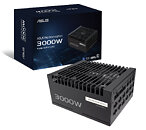
ASUS Announces Giveaway Event to Celebrate 30 Years of Graphics Cards
ASUS today announced the Cheers to 30 Years giveaway event to celebrate the 30th anniversary of the release of its first graphics card. For three decades, users around the world have enjoyed ASUS graphics card innovations and unparalleled PC gaming hardware. In celebration, and as a gesture of thanks to users everywhere, ASUS is offering a range of exciting prizes including Republic of Gamers (ROG) peripherals, apparel, and NVIDIA GeForce RTX 50 Series graphics cards, from July 8 to October 7, 2025.
Participants are invited to enter the Cheers to 30 Years virtual amusement park, where they can ride virtual attractions and collect points—then use those points to enter raffles for ROG gear. Users can also earn points toward raffle entries by completing tasks such as sharing content on social media. On August 19, ASUS will unveil more virtual amusement park attractions, giving participants even more ways to play and more raffles to enter.
Participants are invited to enter the Cheers to 30 Years virtual amusement park, where they can ride virtual attractions and collect points—then use those points to enter raffles for ROG gear. Users can also earn points toward raffle entries by completing tasks such as sharing content on social media. On August 19, ASUS will unveil more virtual amusement park attractions, giving participants even more ways to play and more raffles to enter.






















































































